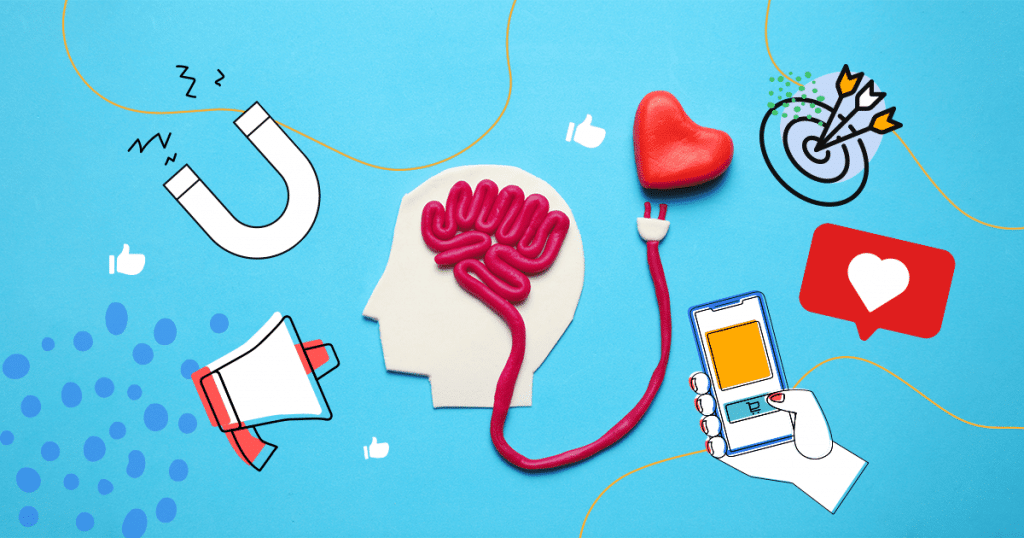Emotion is perhaps one of the most powerful forces when it comes to human nature. Move a person to feel something, and you’ve successfully won their attention.
That said, it’s not difficult to understand why the most successful digital marketing campaigns are also the ones that connect with people over what matters most — their values, pain points, and personal feelings.
Most modern consumers want and expect to build personal connections with the brands they buy from and cultivate meaningful relationships with them over time.
Emotional marketing is a terrific way to show your customers that you want that, too, but there’s a fine art to getting it right.
Here’s how to get started in the right direction.
- What is Emotional Marketing?
- Why is Emotional Marketing so Effective?
- Emotional Marketing: Best Practices and Tips for Success
- Great Examples of Emotional Marketing in Action
- Wrap Up: Successful Marketing Revolves Around a Great Story
What is Emotional Marketing?
Although most modern marketing approaches seek to stir an audience’s feelings to at least some extent, making an emotional connection with the target audience is the primary objective of emotional marketing.
The idea is to leverage this connection to convince the viewer to complete an action, whether that’s to purchase a product, sign up for a mailing list, or any number of other examples.
Most emotional marketing efforts focus on tapping into one specific emotion.
Yes, that emotion may be positive, as with joy, excitement, anticipation, or pride. However, many successful campaigns also leverage fear, anger, or envy.
If emotions can potentially be strong enough to influence decision-making, you can trust that it’s been the focus of a brand’s marketing strategy at some point.
Why is Emotional Marketing so Effective?
Human emotions aren’t just powerful. They tend to linger long after they’re felt, and they can make people profoundly uncomfortable if left unresolved.
This is especially the case with negative emotions.
Acting on emotions is one way to accomplish this, which is precisely why emotional ads show a 23 percent increase in sales compared to standard ads.
Here are some more factors that make emotional marketing especially effective.
It helps your audience remember you
Have you ever noticed how some of your clearest memories are of experiences that inspired powerful emotions?
They might be happy memories, for sure, but you’re just as likely to remember something that made you especially angry, afraid, or anxious.
Emotion has a powerful connection to memory, so events, experiences, and even advertisements that have an emotional impact tend to stick with people.
Make your audience feel something, and they’ll be that much more likely to remember you.
It helps drive sales
According to research, ads that leverage human emotion are 31 percent effective on average, while ads that stick to more traditional tactics are about 16 percent effective.
In other words, hitting your audience right in the feels is a pretty reliable way to drive purchasing decisions.
Fantastic emotional marketing shows a person what could be possible if they become a customer.
It helps convince them that your products and services can make them happier, healthier, more confident, less afraid, and so much more.
It inspires your audience to share
What do you typically do next when something you see or experience makes you feel something powerful?
If you’re like most people, you probably tell someone else, whether that means messaging a friend or sharing the content in question to your social media feeds.
People love to fill their online timelines with material that makes them feel something. They want to pass on the positive feelings to others and rant about the negative ones.
Emotionally-charged content is more likely to spark ongoing conversation as well.
It encourages customer loyalty
Customers who’ve formed emotional connections to the brands they buy from are far more valuable than those who haven’t.
A person who feels connected to your company is someone who will remain loyal to you over time, coming back to buy from you again and again.
Loyal customers are also far more likely to recommend your services to other people they care about. They’ll advocate for you and swear by the products you offer, which is the type of advertising you just can’t buy.
Emotional Marketing: Best Practices and Tips for Success
Understanding why emotional marketing works and what it can do for your business is only the beginning of finding success with emotional marketing.
Here are some tips, tricks, and best practices for making sure the campaigns you come up with hit all the right notes.
1. Embrace meaningful storytelling
The human mind loves a good story. Stories are beautiful ways to stir emotions, encourage relatability, and inspire connection, so they’re also a cornerstone of any comprehensive emotional marketing campaign.
They’re also a simple, approachable way to tie emotion to even the most unlikely product or service.
Yes, you can do this by adding vivid narratives to your advertising and web content, but that’s not the only way to use storytelling to your advantage.
You can also use customer testimonials in your advertising and add your company’s backstory to your website’s “about us” page.
Charity-related marketing campaigns can help humanize your company and give it a beating heart, as well.
2. Surprise your audience and get them curious
Did you know that you’re more likely to remember an experience accurately if something about it caught you by surprise?
Your customers are the same way, and you can use this to your advantage.
Develop fresh ideas or approach familiar ones from an angle your customers may not have considered before.
It never hurts to tease your audience a little, either — just enough to leave them asking a few questions about what they thought they knew.
They’re more likely to seek out more information about your brand or your core message on their own, and they’ll pay more attention to you going forward.
3. Know your audience and focus on them
Don’t simply assume that more always equals more when it comes to reach.
Successful marketing of any kind is about achieving and nurturing sustainable growth.
Customer loyalty is the key to doing this, and that’s impossible to achieve if your company is trying to be all things to all people.
An incredible message that hits the target with a carefully selected demographic may fail to resonate at all if it’s deliberately watered down so that it applies to as many people as possible.
You risk coming across as inauthentic instead of genuine and worthwhile. So make sure you establish who your audience is and develop marketing messages with them in mind.
4. Pay careful attention to creative elements
Memory and emotion are strongly linked to the senses, so keep this in mind when developing the more creative elements of your marketing campaign.
Color, in particular, has a powerful effect on a person’s emotions.
For instance, many people instinctively associate red with excitement or passion and blue with calmness, relaxation, or safety.
Keep this in mind when picking imagery to underscore your desired emotional impact.
The same can be done with elements like music or sound.
Songs written in a major key tend to sound bubbly, optimistic, and happy. But in contrast, minor-key melodies evoke more complicated emotions like melancholy, introspection, and sadness.
Your choices in tempo, instruments, and harmony matter, too.
5. Always be authentic
Even when they’re well aware that they’re watching an ad, people don’t like feeling like they’re being sold something or finessed into reaching for their wallet.
Instead, they make connections with brands and companies that seem authentic.
They want to feel like more than just another potential sale and need to know you’re genuine before they’ll give you their business or trust you with their quality of life.
So always be authentic in your marketing, especially when you’re looking to tap into people’s emotions.
Your audience can spot a fake a mile away, so a bit of authenticity goes a long way.
Know your company’s core values, understand where they intersect with your customers, and be sincere in your branding efforts.
6. Reward responsiveness with engagement
Engaging your customers is more or less a no-brainer when you run an old-school brick-and-mortar business.
When they come into your shop, it’s instinctive to greet them and make sure they feel welcome. But all that can be easy to forget once you and your clientele are on opposite sides of a computer screen.
One of the most potent ways to boost the effectiveness of an emotional marketing campaign is to return your audience’s enthusiasm in full.
Build loyalty by commenting on, liking, and resharing photos your customers post of them using and loving your products.
Respond to comments on your content, and answer any questions people have. It’s a great way to build and nurture a community with your brand at the center.
Great Examples of Emotional Marketing in Action
Want a closer look at what successful emotional marketing in action really looks like?
Take a gander at how the following brands approached things, and learn from the best in the business.
Of course, each example is different, but they all nail the art of stirring up deep emotions in a target audience.
O Boticário
In 2024, for Mother’s Day, the Brazilian brand O Boticário showcased the potency of emotions in advertising. Their campaign depicted a mother and son navigating his teenage years, symbolized by a boat adrift in a storm.
It’s a poignant message that resonated with moms of children of all ages, as it captures a phase everyone experiences and relates to on a deep emotional level.
The uplifting conclusion evokes feelings of hope, love, and protection. O Boticário’s campaign serves as a prime illustration of the essence of emotional marketing.

Uber
Isn’t it unusual for Uber not to encourage rides? But amidst a pandemic, it made sense.
Uber’s campaign thanked people for staying home, showing families connecting virtually and missing physical touch.
It really struck a chord, and it continues to do so.

Sheba
If you own a cat (or have in the past), then you know all too well how prone our feline friends are to boisterous nighttime activity.
Upscale cat food brand Sheba showed its customers how well they could relate to being awakened in the middle of the night by an overzealous kitty with this clever collection of 4 AM lullabies for tired cat owners.
The lullabies are relatively simple — soothing ASMR sounds juxtaposed with adorable cat-related imagery — but they had a significant impact on Sheba’s target audience.
The campaign helped paint the brand as relatable, elegant, and caring — a perfect combination for appealing to animal lovers who adore their pets.
And you can bet they remembered Sheba the next time they found themselves shopping for cat food.

Dollar Shave Club
While tapping into negative emotions related to a potential customer’s pain points is always a powerful approach, it’s essential to realize that you can do so without leaving the customer feeling negative.
This ad from Dollar Shave Club is a perfect example of how to do this successfully.
The brand accomplishes this by addressing common shaving-related frustrations — like how expensive decent razors can be — in a humorous, upbeat context that leaves the viewer feeling anything but negative.
The audience is left genuinely feeling like Dollar Shave Club just might be the solution they’re looking for: a company that understands where they’re coming from and cares about saving the day.

Cadbury’s
Taking a page from the same book as Coca-Cola, Cadbury successfully brightened Easter 2021 for its British and Irish customers with a fun virtual egg hunt that helped distant loved ones feel more connected despite the continuing pandemic.
Participants had the opportunity to hide a virtual egg for free anywhere in the world via a Google Maps-supported augmented reality app.
If they wished, users could also purchase one of four limited-edition eggs, using the app to “hide” the egg for a loved one. Then once found, the finder would receive a physical version of that egg.
The campaign helped pandemic-weary customers feel more connected to loved ones while enjoying a little light-hearted fun and nurtured a personal connection with the Cadbury brand.

Wrap Up: Successful Marketing Revolves Around a Great Story
In a business world that’s becoming more and more about personal connection all the time, the ability to successfully tap into an audience’s emotions is crucial.
Learning the ropes of emotional marketing is an integral part of that, but so is the ability to tell an incredible story.
That’s where WriterAccess comes in, offering a streamlined content creation platform.
Say goodbye to stories that fall flat and captivate your audience’s hearts instead. Give WriterAccess a try free for 14 days!








